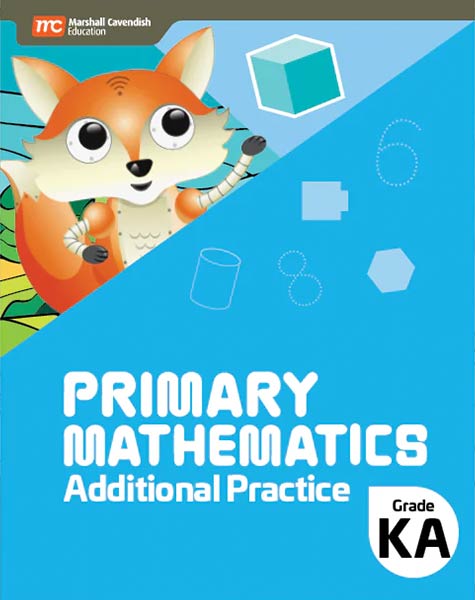Exploring practical ways to reduce struggles in primary math
Introducing the most effective Faster Ways for Addressing Math Troubles Swiftly
In the domain name of mathematics, effectiveness is vital. Understanding faster ways can change the method individuals approach troubles. From leveraging the distributive residential property to using fast multiplication techniques, these strategies boost both rate and precision. Furthermore, recognizing patterns streamlines intricate estimations. As one checks out these methods, they might discover unexpected insights that can alter their mathematical experience. What are the most reliable methods that can be quickly integrated into daily technique?
Grasping Psychological Math Techniques
How can one enhance their computation speed without counting on calculators? Grasping psychological math strategies uses a useful remedy. By utilizing approaches such as breaking numbers right into smaller, workable parts, people can simplify complicated calculations. When adding two-digit numbers, rounding each number to the nearby 10 can make mental enhancement less complicated before changing back to the initial values.
One more reliable approach is to practice reproduction tables extensively, enabling fast recall of items (struggles in primary math). In addition, acknowledging patterns in numbers can assist in quicker computations, such as making use of the buildings of also and odd numbers. Routine practice through challenges and video games can additionally fine-tune these abilities, making mental math much more user-friendly
Inevitably, growing self-confidence in one's math abilities enables for quicker decision-making and enhances general mathematical efficiency. By integrating these techniques, any individual can substantially boost their calculation rate.
Using the Distributive Building
The Distributive Building is a fundamental principle in maths that simplifies computations by allowing multiplication across addition or subtraction. It is necessary for pupils to grasp its application through practical instances, which can enhance their analytical abilities. In addition, identifying common mistakes can better solidify their understanding and protect against mistakes in future computations.
Understanding the Distributive Residential Or Commercial Property
Grasping the distributive residential or commercial property can greatly streamline mathematical computations. This essential residential property states that when increasing a single term by a sum or distinction, one can disperse the multiplication throughout each term within the parentheses. For example, in the expression a(b + c), one can rewrite it as abdominal muscle + a/c. This technique not just enhances estimations however likewise improves understanding of how numbers communicate (struggles in primary math). The distributive building is specifically helpful in algebra, where it helps in streamlining expressions and resolving equations. Furthermore, it prepares for extra complicated principles, such as factoring and polynomial procedures. By grasping the distributive property, pupils can develop a solid structure for taking on a wide variety of mathematical obstacles efficiently
Practical Instances Illustrated
Why is it vital to apply the distributive residential or commercial property in useful situations? The distributive property allows people to streamline complicated computations, making analytical much more reliable. As an example, when computing the total price of numerous products, one can use the expression 5(2 + 3) to locate the overall cost of five items priced at $2 and $3. By dispersing, the computation comes to be 5 × 2 + 5 × 3, yielding a quicker outcome of $25. One more example remains in algebra, where simplifying expressions like 3(x + 4) can be achieved through circulation, causing 3x + 12. Such applications show the effectiveness of this building in different real-world circumstances, improving both rate and accuracy in mathematical problem-solving.
Usual Errors to Avoid
The distributive residential property is a powerful device in maths, common errors can lead to inaccurate outcomes. One constant mistake takes place when students fail to remember to distribute the coefficient to every term within parentheses. As an example, in the expression 3(x + 4), falling short to use the home appropriately can cause leaving out the reproduction, yielding a wrong solution. An additional mistake includes misapplying the residential or commercial property by adding rather of multiplying, specifically when negative indicators are included. In addition, pupils may neglect to simplify the outcome, which can rare errors made throughout circulation. Recognizing and avoiding these challenges can boost analytic performance and precision when utilizing the distributive property in different mathematical contexts.
Quick Reproduction Shortcuts
In the domain of quick reproduction faster ways, strategies like multiplying by powers of 10 and the doubling and halving method stand out. These methods can greatly simplify estimations, making them much more easily accessible. Recognizing these faster ways can boost effectiveness in mathematical analytic.
Increasing by Powers of 10
When increasing by powers of 10, the procedure ends up being incredibly straightforward, as the operation mostly involves changing the decimal factor. Increasing a number by 10 needs moving the decimal one area to the right, while multiplying by 100 requires a change of 2 locations. This simplicity reaches bigger powers, where each added no shows an additional decimal shift. For instance, multiplying 5.6 by 1,000 results in 5,600. This technique considerably enhances rate and precision, as people can quickly imagine the outcome without complex computations. Such efficiency is specifically valuable in mental mathematics or when time is restricted, permitting fast analytical in numerous mathematical contexts. Grasping this strategy is important for any individual intending to boost their math skills.
Increasing and Halving Approach
The Doubling and Halving Approach gives a reliable strategy for quick multiplication, particularly when handling also numbers. This method entails changing a multiplication issue right into a less complex type by either increasing one of the numbers and halving the other. To calculate 16 × 25, one can halve 16 to obtain 8 and double 25 to get 50, resulting in 8 × 50, which equals 400 (struggles in primary math). This technique streamlines calculations, making them a lot more convenient. It is specifically beneficial in mental mathematics, permitting individuals to work with troubles swiftly and properly. By leveraging this method, trainees and professionals can enhance their mathematical agility, thus improving overall efficiency in mathematical jobs

Efficient Division Techniques
Division commonly poses difficulties for many learners, employing effective approaches can considerably simplify the procedure. One efficient technique is using compatible numbers, which entails rounding the divisor and returns to much easier values that are close to the original numbers. This technique makes mental calculations much more convenient. An additional technique is the evaluation strategy, where students can find a rough answer prior to carrying out the specific division, giving a beneficial standard for precision.
The long division strategy continues to be a staple for dividing bigger numbers. By damaging the procedure right into smaller, extra absorbable actions, students can maintain quality. The duplicated subtraction approach can likewise be practical, particularly for those that have problem with even more abstract ideas. By methodically deducting the divisor from the dividend, people can imagine the process. On the whole, these methods can enhance department abilities, leading to quicker and much more accurate analytical capabilities.
Fast Addition and Subtraction Methods
How can learners enhance their speed and precision in enhancement and reduction? One effective technique is to make use of psychological math techniques, such as damaging numbers right into smaller sized, much more workable parts. When including 47 and 36, one can initially include 40 and 30 to obtain 70, then add the staying 7 and 6 to get here at 83. This technique streamlines estimations and minimizes mistakes.
One more technique entails utilizing the number line for aesthetic students, helping them to see the partnerships between numbers and improve their comprehension. In addition, exercising with tools like flashcards can enhance fast recall of basic amounts and distinctions.
Students can benefit from acquainting themselves with benchmark numbers, such as rounding to the closest ten, which permits for quicker estimates. By incorporating these official website approaches right into their technique, learners can substantially enhance their speed and precision in standard arithmetic procedures.
Leveraging Estimate for Quick Calculations
Estimate works as a powerful device for improving calculation speed, matching psychological mathematics techniques successfully. By rounding numbers to their local entire worths, people can streamline complex estimations, making it much easier to come to an approximate result quickly. As an example, when confronted with a trouble like 198 + 267, rounding to 200 + 270 returns a quick price quote of 470, enabling the solver to assess the precision of the final solution.
Evaluation this content is particularly valuable in situations involving reproduction and division. By rounding elements to simpler numbers, one can promptly evaluate approximate items or quotients. This method not just conserves time however additionally helps in recognizing prospective mistakes in computations.
Acknowledging Patterns and Solutions
Patterns and formulas are important devices in mathematics that make it possible for people to resolve troubles much more successfully. Acknowledging these patterns permits learners to recognize relationships in between ideas and numbers, which can streamline complex estimations. As an example, identifying the quadratic formula (ax ^ 2 + bx + c = 0) assists in fast services to different formulas.
Furthermore, patterns in series, such as arithmetic or geometric progressions, assistance people predict future terms without substantial estimations. Solutions, on the other hand, work as shortcuts, permitting for faster analytic by encapsulating complex partnerships right into convenient expressions.
Often Asked Concerns
Exactly How Can I Enhance My Focus While Resolving Math Problems Quickly?
To improve focus while addressing mathematics troubles quickly, one can eliminate diversions, set details objectives, technique mindfulness strategies, take normal breaks, and maintain a regular research regimen to improve focus and psychological quality.
What Devices or Applications Aid with Quick Math Problem-Solving?
Numerous devices and apps, such as Photomath, Microsoft Mathematics Solver, and Desmos, boost fast mathematics analytical. These resources supply step-by-step solutions, graphing capacities, and immediate comments, making them you could try these out valuable for experts and students alike.
Exist Details Mathematics Shortcuts for Standard Tests?
Yes, details math shortcuts for standard examinations include techniques like estimate, recognizing number residential or commercial properties, making use of the process of removal, and mastering usual solutions. These techniques enhance rate and accuracy, improving total test efficiency.

Just how Do I Practice Mathematics Shortcuts Successfully?
To exercise math faster ways efficiently, people ought to frequently address diverse problems, use on-line resources, and involve in timed drills. Consistency and reflection on blunders enhance understanding, eventually leading to improved speed and precision in calculations.
Can Shortcuts Be Applied to Complicated Mathematics Problems?
Faster ways can without a doubt be related to complex math problems, although their efficiency varies. Mastery of foundational concepts and critical thinking enables people to simplify processes, making it simpler to deal with complex computations effectively.
By employing techniques such as damaging numbers right into smaller sized, manageable parts, people can streamline intricate estimations. Furthermore, acknowledging patterns in numbers can promote faster calculations, such as utilizing the properties of even and odd numbers. Estimation serves as an effective device for boosting calculation rate, complementing psychological mathematics approaches properly. By rounding numbers to their nearest whole worths, individuals can simplify complex calculations, making it much easier to get here at an approximate outcome promptly. Identifying these patterns permits students to identify connections in between ideas and numbers, which can simplify complex calculations.